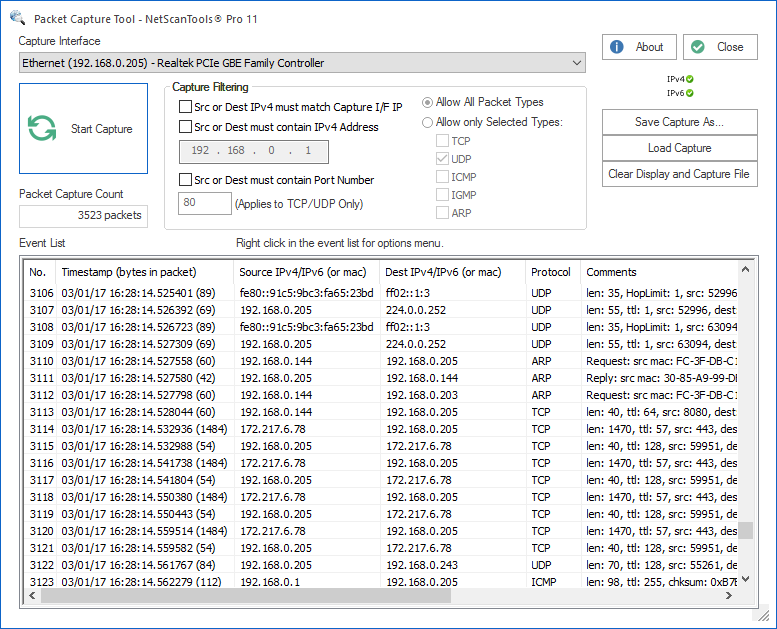
More traffic will mean more data in less time so your capture window will be smaller.

The amount of time that this capture will cover is entirely dependent on how busy your network traffic is. So to interpret the command above, I would be capturing roughly 100MB of packet data in 10MB chunks before the ring buffer kicks in and starts overwriting old capture files. This is optional, but I see no benefit in watching a continual counter. q means to not print the number of captured packets to the command prompt window. w c:\capfilename.pcapng means prepend each capture file with the word capfilename and save it to c:\ with the extension. i “Ethernet2” means use the ethernet adapter with the name “Ethernet 2” which we determined earlier, we could also use the number given to the ethernet adapter when we ran the dumpcap -D command earlier. Less files means less space consumed before it begins overwriting the oldest files. You can set this as low or high as you are comfortable with. b files:10 means capture up to 10 files before overwriting the oldest file.

b filesize:10000 means capture until pcapng file is 10,000kb or ~10MB. Now that we have our interface name, we can use the dumpcap command string to begin dumping packet data to a file which is: dumpcap.exe -b filesize:10000 -b files:10 -i "Ethernet 2" -w C:\capfilename.pcapng -q
#Capture packets windows install
#Capture packets windows how to
Related: How to Install Wireshark on Windows 10 Continuously Capture Packets to Separate Files with Dumpcapĭumpcap is a command line tool for dumping network traffic to a file that is installed alongside Wireshark. I’ll also show you how to do this with Wireshark itself if you’re more comfortable with that and explain the pros and cons. The easiest way is to use a tool called Dumpcap which you’ll get when you install Wireshark. Plus, we can even have the capture overwrite the oldest files so the capture can continue indefinitely, much like a CCTV system would handle recorded video.

Well you’re in luck! Not only is it possible, but it’s super easy! It was precisely designed for this purpose, create a network capture from a single process (and its children) without leaking other traffic.Need to know an easy way to capture packets for extended periods of time and save them as small. Capture from either end of the veth interface and start your process within the network namespace.įor the latter approach, I wrote some scripts to automate it, it can be found at. On Linux, create an isolated network namespace and use a virtual Ethernet (veth) pair to connect the new network namespace with the main network namespace.Run a program in a virtual machine (VM) and capture traffic from within the VM, or from the bridge attached to the outside of the VM.If you know that an application contacts certain IP addresses or ports, you could specify a capture filter such as udp port 53 or host.For established TCP sockets, this information could potentially be looked up on-the-fly, but there is no way to express a capture filter to limit filtering to a single process.

Arbitrary packets are typically not associated with a process.


 0 kommentar(er)
0 kommentar(er)
